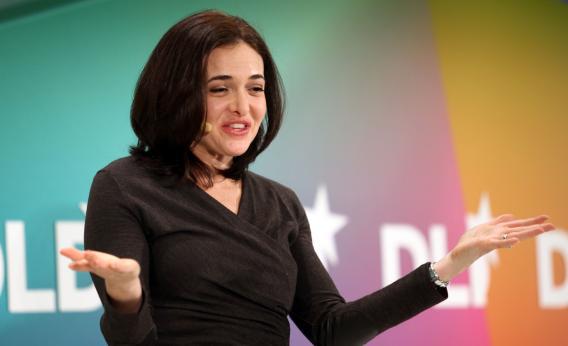In the fine old tradition of magazine lists of powerful people—check out Slate’s Top Right!—comes The Newsweek Daily Beast Digital Power Index, a paean to potentates whose influence is measured in terabytes and retweets. Here are the sultans of Silicon Valley, from celebrity CEOs like SpaceX’s Elon Musk to behind-the-scenes shakers like “super-angel” Ron Conway. Here are the nerd-heroes of computer culture, like Linux creator Linus Torvalds and Ruby founder Yukihiro Matsumoto. And here are the information age’s insurgents, like WikiLeaks’ Julian Assange, and its philosophers, like author and NYU professor Clay Shirky.
In all, the magazine picked 100 digital luminaries across 10 categories—“Innovators,” “Revolutionaries,” “Opinionists,” etc.—plus 11 lifetime achievement honorees. Not counting three groups, that’s 108 people. And 99 of them, by my count, are men.
Some commentators will no doubt indict Newsweek for the dearth of women on its list. That was the swift verdict earlier this month when Slate’s sister publication Foreign Policy published another tech-related list, the FP Twitterati 100, which was also more than 90 percent male. Both lists have their share of questionable selections, as lists always do. (That’s sort of the whole point.) But are Newsweek, which is edited by Tina Brown, and FP, which is edited by Susan Glasser, really out to discriminate against women? Or is there something deeper at work here?
The fact that women run both magazines doesn’t preclude the possibility that the lists are biased, of course. Each probably could have done a better job building gender equity into the process. In Newsweek’s case, that might have meant including more women among the expert panelists it picked to build the lists—or prodding the male panelists to resist defining “power” in masculine terms.
But it’s probably safe to assume that neither publication set out to pooh-pooh women’s influence in the digital sphere. Why, then, were their results so skewed? Is the Internet really still as male-dominated as these lists make it seem?
In one sense, the answer is clearly no. Women have emerged as the majority on social networking, e-commerce, and social gaming sites, and their market power on the Web is undeniable. Women have also launched successful tech firms, founded influential tech blogs, and, in the cases of Brown and Glasser themselves, pioneered digital journalism.
On the other hand, there’s no denying that men retain the upper hand in Silicon Valley’s rarefied echelons. The companies that rule the Web—Apple, Google, Microsoft, Yahoo, Amazon—were founded by men, and their C-suites remain mostly boys’ clubs. The venture capital realm is likewise still male-dominated, and women continue to form a small minority of graduates from top computer-science programs.
To some extent, then, the magazines are just the messengers of a problem that deserves a more serious explanation. At a time when startups are assailed for their “brogrammer” culture and Facebook is in the news for electing its first female board member (under pressure from advocacy groups), it seems clear that all is not equal on the digital playing field.
Among the women who did make Newsweek’s list, none were in the “Visionaries,” “Innovators,” “Angels,” “Virologists” (purveyors of viral content, like Matt Drudge and 4Chan’s Chris Poole), or “Builders” categories. Three were “Evangelists,” more than any other category, while two were “Personalities” (including Lady Gaga). That might make it seem like the women who succeed in tech do so by dint of charisma rather than competence, but it isn’t so. Of the “Evangelists,” only Google’s Marissa Mayer is best known as a public face—Facebook’s Sheryl Sandberg is deservedly renowned for her steady business hand, and law professor Susan Crawford for her clear-headed analysis.
It’s easy to wish that a few more women had popped to the panelists’ minds (actress and nerd heroine Felicia Day would have been a natural for the “Personalities” list, and U.S. Rep. Zoe Lofgren might have fit in nicely on the “Navigators” section), or that a few had been ranked higher (whatever you think of Arianna Huffington, she wields far more clout in online journalism than the four “Opinionists” ranked above her). But that wouldn’t do much to change the overall picture.
The Internet was supposed to be a fresh frontier, a place where people could forge their identities free from the shackles of age, race, gender, or social class. That old sense of hope is highlighted in the first sentences of the Daily Beast’s introduction to the online version of its Digital Power Index:
In two short decades, the Internet has changed almost everything about the way we live: The way we communicate, the way we shop, the way we read, the way we love, the way we fight, the way we play. So, too, the people shaping and changing the world are a breed apart from the old ruling class.
A breed apart, perhaps, but the same old gender.
UPDATE: In case there was any doubt that the magazine knew this was coming, a Newsweek Daily Beast editor points me to a post from New York-based writer Rachel Sklar on its own site, criticizing the list for being light on women. (The magazine’s editors invited her to contribute the piece, and it went live online on the same day as the list.) Sklar’s post is worth checking out: Her suggestions of women who could have made the cut, including angel investor Esther Dyson, DailyCandy founder Dany Levy, and AllThingsD co-founder Kara Swisher, makes for an impressive who’s-who in its own right.
I’d only add that, while the women Sklar mentions are eminently worthy, one could with equal ease come up with a list of deserving men who were also left off the list. The gender imbalance in the tech world’s power corridors is real, not merely a figment of media blind spots.
